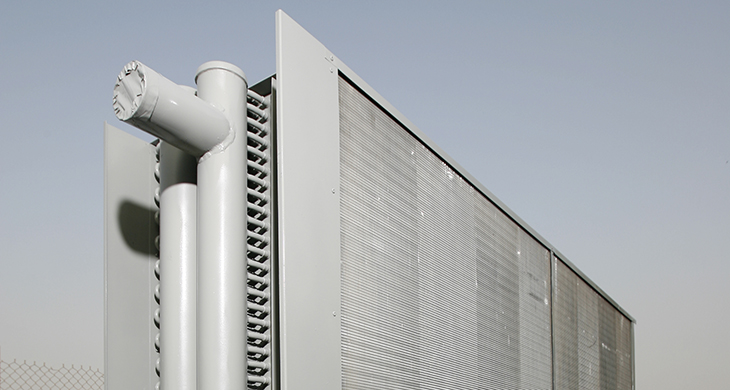The climate control division at Serck provides products and services to enhance the efficiency and effectiveness of HVAC systems around the world. One of the key products used to achieve this is including heat pipes as part of an air conditioning system.
Heat pipes are a key component of many heating, ventilation, and air conditioning (HVAC) systems. A heat pipe is a simple device that can transfer heat from one point to another without the use of an external power supply. It is a sealed tube that has been partially filled with a working fluid. In HVAC applications, this fluid is most often refrigerant.
With lower relative humidity, indoor comfort can be achieved at higher thermostat settings, which results in net energy savings. Generally, for each 1° F rise in the thermostat setting, there is a 7% savings in electricity cost. In addition, the pre-cooling effect of the heat pipe allows the use of a smaller compressor.
They work by increasing the efficiency of the fresh air handling units where they are installed, increasing the efficiency of the entire system as a result. In an air conditioning system this works by creating the double effect of pre-cooling the air before it goes to the evaporator or cooling coil and then immediately re-heating it, thereby reducing the relative humidity of the supply air.
The sealed refrigerant – which will boil under low-grade heat – absorbs heat from the warm fresh air entering an air-conditioning system and vaporizes inside the tube. The vapor then travels to the other end of the heat pipe (the high end), which is placed in the stream of cold air that is produced by the air conditioner.
The heat that was absorbed from the warm air at the low end is now transferred from the refrigerant’s vapor through the pipe’s wall into the cool supply air. This loss of heat causes the vapor inside the tube to condense back into a fluid. The condensed refrigerant then travels by gravity to the low end of the heat pipe where it begins the cycle all over again.
Activated by temperature difference alone, heat pipes consume no energy. Due to the pre-cooling effect, a heat pipe allows the evaporator coil to operate at a lower temperature, thus increasing the moisture removal capability of the air conditioning system by 50-100%.
Serck have experience manufacturing and servicing both horseshoe heat pipes (HSHP) and vertical heat pipe heat recovery (HPHR) units, which also do energy recovery. For an example of heat recovery, see how we helped a UK chemical firm save over £70,000/year


